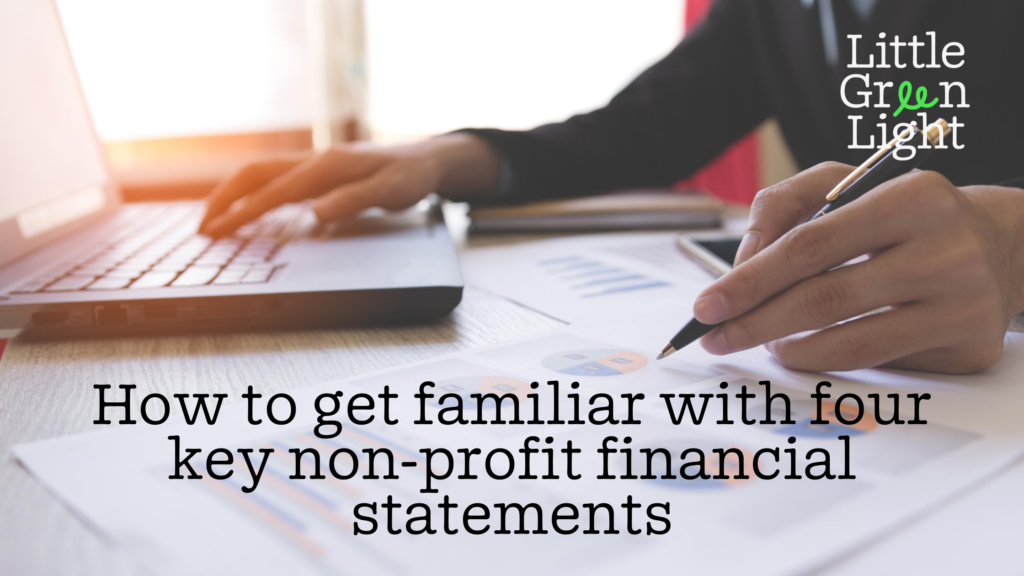Little Green Light is a cloud-based donor management system for fundraisers.
Subscribe to get our latest product updates, best practices and tips to grow your nonprofit.

Non-profit financial statements can be intimidating. But you don’t need a degree in accounting to have a working understanding of them. By familiarizing yourself with four key financial statements, you’ll gain a clearer understanding of how your fundraising efforts fit into the organization’s overall financial picture. This in turn will give you a sense of how savvy donors and prospects assess your organization to determine how it spends its money, if it’s financially viable in the long term, and if they would be comfortable making a contribution.
You can use your organization’s own documents to get familiar with financial statements. Note that these four statements are generated directly from your organization’s accounting software as opposed to your donor management software. Your organization’s bookkeeper or accountant can provide you with copies.
Think of a balance sheet as a snapshot that offers a comprehensive view of an organization’s financial health at a specific moment in time. You can use this document to evaluate an organization’s assets (things of value or with future economic benefits) versus its liabilities (debts or future economic costs).
The format of a balance sheet is always the same: Assets are listed first, followed by liabilities and then net assets (temporarily restricted, permanently restricted, and unrestricted). Assets are generally listed in order of liquidity (how quickly the assets can be turned into cash).
As of the date of this balance sheet, what does the organization owe?
How much cash does the organization have?
Are the organization’s current assets greater than or close to its current liabilities?
This document shows the organization’s operating results over a particular period of time (usually a fiscal year). When you look at a statement of activities, you’ll see support (grants and contributions), revenue (fee for service, event income, merchandise sales), and expenses. The statement of activities includes the actual amount as well as the amount budgeted, so you can see variances.
How do the actuals compare to the budgeted amounts? Does anything surprise you?
How many different sources of revenue do you see?
Does the organization rely heavily on a particular funding stream?
This statement shows the sources and uses of cash, so you can see where cash is coming from and how it’s being spent. You’ll see cash flow from your organization’s core operations, cash flow from investing, and cash flow from financing.
Is there enough cash coming in to support the organization’s programs?
This statement lists expenses incurred during a particular time period, allocated by program services (mission-related activities) and support services (such as administration and fundraising). The total expenses on this statement will equal the amount you saw listed on the statement of activities.
What is the organization’s largest expense?
If your organization reduced that expense significantly, how would it affect your organization’s ability to achieve its mission?
Conclusion
To gain an even stronger understanding of the organization’s financial health and stability, it’s a good idea to compare your non-profit financial statements over time (for example, five years) to get a sense of trends and patterns. These insights will benefit you as an employee of the organization, and will also prepare you to have more informed conversations with funders and other stakeholders and to answer their questions as they consider supporting your mission.
Once you’re comfortable reading financial statements, you can use them to strengthen your fundraising plan. Find out how in this article.
Ready to try LGL? Get your first 30 days free. No credit card required.